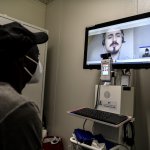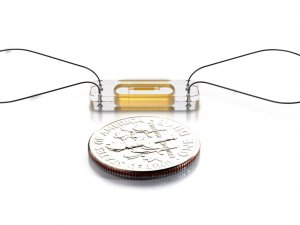Remote patient monitoring – the unstoppable post-Covid force

Telehealth and telemedicine were already promising economic sectors in the medtech sphere ahead of 2020. Then Covid-19 hit the world and revolutionized our understanding of what was possible in both sectors, because they were suddenly elevated from useful add-ons to vital mechanisms for the continued operation of society. The lockdown saw the rise of Remote Patient Monitoring and hospital at-home models, advancing patient safety.
Technology has always been the friend of medicine, from sharp scalpels to ventilators, from asthma inhalers to at-home cardiac monitors, and from landline telephone consultations to Zoom consults, allowing patients to be seen faster, with less stress and a lower risk of cross-contamination.
Today, we have evolved telemedicine to a point where chronic health conditions can frequently be managed and monitored at home, with everything from weight, lung capacity, pulse, oxygen saturation in blood, blood pressure, and blood glucose, to temperature, pain management, medication management, and even mental health coming under the remit of Remote Patient Monitoring, reducing the strain on in-hospital services by a huge margin.
But there is a lot more than can be done, and the pandemic has highlighted the possibilities vividly.
A report by McKinsey & Co. estimates that around US$250 billion of current healthcare spending could be virtualized, making it not only significantly less traumatizing to patients, but a lot more cost-efficient, too.
While the pandemic as a highly dangerous situation will eventually recede, it has awoken a demand for virtual care that is very likely here to stay. Wearables especially have become a must-have for many, with Deloitte predicting that 320 million consumer health and wellness wearable devices will ship worldwide in 2022, and that that figure could jump to 440 million units shipped by 2024.
Benefits of Remote Patient Monitoring
Remote Patient Monitoring, post-pandemic, uses the latest advances in information technology to record and analyze the health data of patients. It uses such cutting edge technology because the world has just woken up to its usefulness, and it hasn’t had time to grow redundant yet.
YOU MIGHT LIKE

Telehealth services come with sizable cyber risks
Similarly, the pandemic took us forward by necessity in leaps and bounds in terms of the dissemination of health data to healthcare providers for evaluation and clinical decision-making. We saw significant improvements not only in the transmission of health data without the need for face-to-face evaluation, but also in the speed of the action healthcare professionals were able to take based on the data.
One of the main benefits that RPM brings to both patients and healthcare staff is that it improves the patient’s quality of life by reducing the likelihood of necessary hospitalization, while also being much more cost effective than, for instance, hospital-based patient monitoring.
Another upside of Remote Patient Monitoring, especially during Covid-19, is that it prevents or limits the transmission of infectious disease. Avoiding an in-person visit eliminates the risk of unnecessary exposure—particularly for the elderly and those who are chronically ill, pregnant, or otherwise immunocompromised. Remote Patient Monitoring allows providers to stay updated about their patients by examining the transmitted data collected while they go about their daily lives.
The data collection in turn can alert providers to potential health issues, improve patients’ health outcomes, and reduce overall healthcare costs. Especially for patients with chronic diseases, the sharing of real-time information collected by medical devices can mean avoiding a visit to the ER. That means less pressure on the patient, less pressure on the healthcare professionals, less pressure on hospital budgets, and potentially, less pressure on health insurance costs, too.
Devices for Diabetics
One of the most common forms of Remote Patient Monitoring is experienced by people with diabetes, where connected blood glucose meters, continuous glucose monitoring devices, and insulin delivery systems are used at home.

Dexcom Continuous Glucose Monitoring.
The traditional way in which patients with diabetes used glucose monitors to monitor their blood sugar was by pricking their finger to get a drop of blood for the glucose monitor to analyze.
Recently though, continuous glucose monitors have become commonplace in homes across America. They remove the need for patients to stick their finger to draw blood. These devices use a small sensor that’s placed just beneath the skin, and which continuously monitors blood sugar levels throughout the day, uploading the snapshot to a smart device.
Cardiac Monitoring
People with heart issues are also benefiting from Remote Patient Monitoring already.
Patients with a high risk of heart failure (HF), potentially leading to frequent hospitalization, now have access to home monitoring technology, providing early indications of HF decompensation and allowing for the optimization of therapy to prevent hospitalization with heart failure.
As well as external Remote Patient Monitoring, technology has advanced to the point where patients can get an implantable heart failure monitoring system – a device that is implanted into the pulmonary artery that can monitor the changes in blood pressure through that artery. Doctors can use the data to adjust a patient’s treatment plan or medications to prevent the heart failure from worsening.
For example, Abbott’s CardioMEMS HF System is a remote monitoring technology that detects changes in pulmonary artery pressure, helping to support earlier-stage heart failure patients. The paperclip-sized device, implanted in a patient’s pulmonary artery during a minimally invasive procedure, is designed to monitor pressure changes in the heart.

The CardioMEMS HF System.
According to Abbott, the sensor sends the patient’s pressure readings to the clinical team and allows doctors to make therapy changes to combat the progression to later-stage heart failure. It also helps healthcare teams to virtually manage a patient’s condition from anywhere. The CardioMEMS HF System provides early warnings that let doctors protect a patient against the worsening of their condition.
The pandemic proved what was possible in Remote Patient Monitoring. Its development and advancement cycle can only increase in speed and sophistication as it beds into the expectation of patients, broadening medical technology markets, increasing healthcare cost efficiency, and improving patient outcomes all at once.









